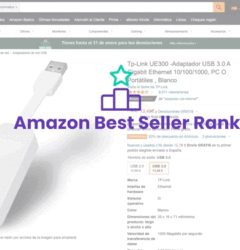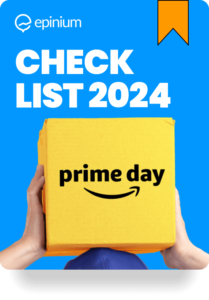Amazon’s Sponsored Display ads are the “new baby” when for the Amazon advertising family. We often talk about Sponsored Products and Sponsored Brands, but a new piece of data concerning Sponsored Display ads had us wondering and was worth exploring.
So, if you have never implemented nor run any Amazon’s Sponsored Display ads, they are essentially a different way for advertisers to target their audience. While Sponsored Products and Sponsored Brands are triggered with keywords, Sponsored Display ads use demographics to target the right audience.
Sponsored Display Ad Performance
When Amazon launched Sponsored Display ads in 2019, we looked into the ad type and found some discouraging results for Sponsored Display ads. Conversion rates decreased around 1% and sometimes were even lower. Hence, it was not exactly a great thing for an Amazon marketer.
However, in April of 2020, we saw a big boost in the performance of Sponsored Display ads. Actually, a big boost doesn’t really do it justice. We’re talking outstanding growth where conversion rates rose from 1% to over 100%.
How Can Sponsored Display Ads Have High Conversion Rates?
So, since April, brands have experienced a huge increase in conversion rates and an incredible drop in ACOS for Sponsored Display ads. However, how is such a turnaround even possible in such a short period of time?
We dug deeper on it and it seems this change has come from a change actually made by Amazon.
We’ve seen a dramatic boost in conversions and huge drops in ACOS.
To begin with, let’s break down how Amazon is defining “conversions.” Traditionally, conversion rates have reckoned how many website visitors become paying customers or people who opt-in to something. To put it simply, Amazon’s conversion rate can be calculated by dividing total orders over total clicks.
However, when it comes to Sponsored Display ads, this equation changes. Sponsored Display ads offer three targeting types:
Audiences that have viewed your product or similar products.
Audiences that have searched for products that are similar to your product.
Audiences that have purchased your product in the past.
If you are retargeting for audiences that have purchased your product or searched for similar products, you are using a cost per thousand impressions advertising model (CPM). For audiences that have viewed your product, a cost per click (CPC) model is used.
Normally, for Sponsored Products, there are different dynamic bidding options. For Sponsored Display ads, there is no fixed bidding option. CPM audiences only have down-only options and CPC audiences have dynamic up and down options.
The Reason Conversion Rates are So High
When looking at the rising conversion rates for Sponsored Display ads, the reason for such a boost lies in the change to Amazon’s attribution window. Conversions are no longer retrieved from clicks but also views.
If Amazon converted only by clicks, the conversion rate would be much lower.
According to Amazon, “Orders from advertised products and all products within your brand sold by Amazon and third-party sellers within 14 days of impressions or clicks on your ad. The exception is ad groups using the “Views” audience, which only include sales within 14 days of clicks on your ad.”
That means whether you’re using Seller Central, Vendor Central, or someone else is selling your product, those sales and impressions are being attributed to your display campaign.
Let’s say someone views your product because they are a previous customer and decide to order three items from you a few weeks later. These purchases will change the conversion rate for your Sponsored Display Ad.
For the view audiences, Amazon only attributes sales if someone clicks on the display ad. For the search and previous customer audience, Amazon attributes sales to impressions.
How Amazon Sponsored Display Ad Data Affects You
The way Amazon defines conversions has definitely changed. The lack of alignment between click-through conversions and view-through conversions makes for incredibly misleading conversion rates.
It’s safe to say that the effectiveness of Amazon’s Sponsored Display ads hasn’t experienced a dramatic improvement since last year. The reporting system has made it easier for Amazon to show sellers high conversion rates and lower ACOS numbers, but the foundation of the advertising platform remains unchanged.
Also, there is a lack of clarity on some relevant issues that come with a lack of differentiation between view-through conversions and click-through conversions exists.
Let’s imagine someone sees a Sponsored Display Ad on a third-party site and doesn’t even acknowledge it. Amazon will still count this as a view. If that person then purchases that product two weeks later from a Sponsored Product listing, where is the sale attributed to? It’s uncertain since Amazon hasn’t made that clear and it’s possible that the sale would count for both.
Major Takeaways
So, Amazon has modified its method for calculating conversion rates retrieved from Sponsored Display ads. View-through conversions and click-through conversions are now being combined to show incredibly high conversion rates and very low ACOS.
Overall, Sponsored Display ads can still be great in terms of effectiveness, yet brands should not see it as the secret formula that the numbers describe it as. Sponsored Display ads are still quite new to the family and we’d love to see more features when it comes to dynamic bidding and more transparency with the data, especially conversion rates.






